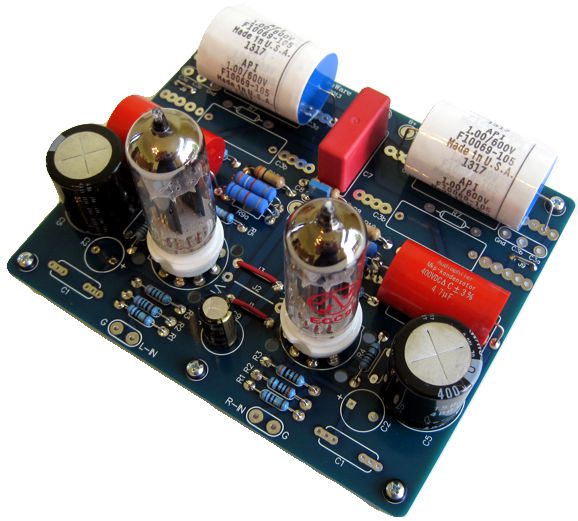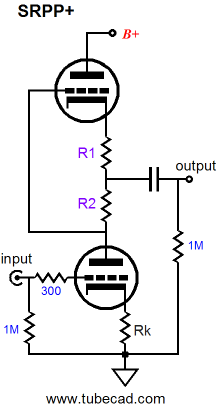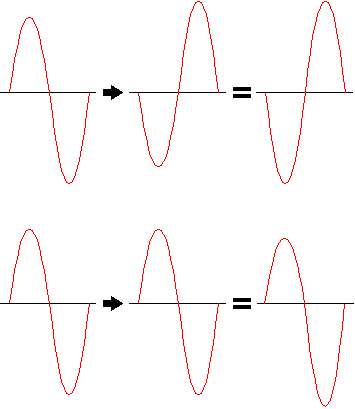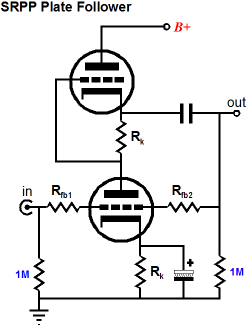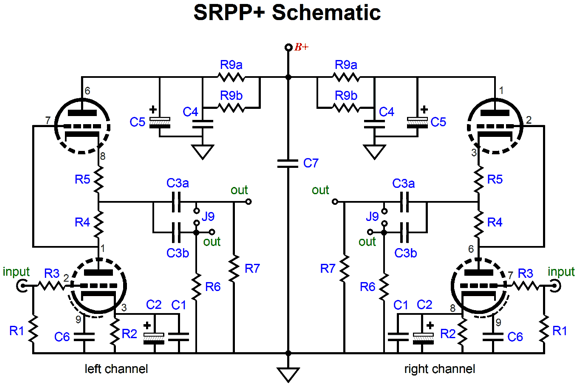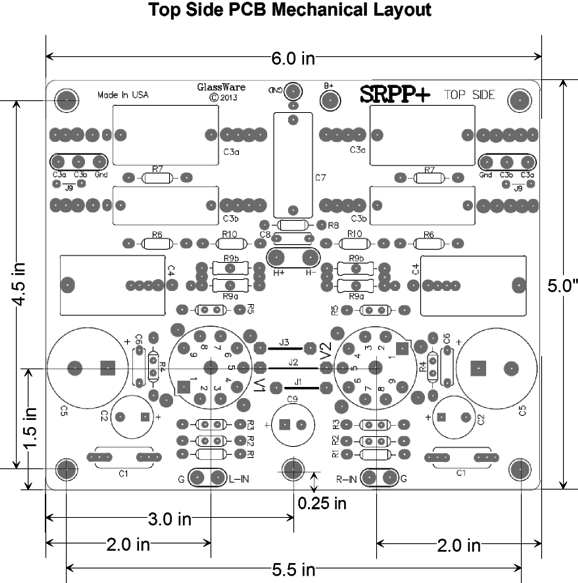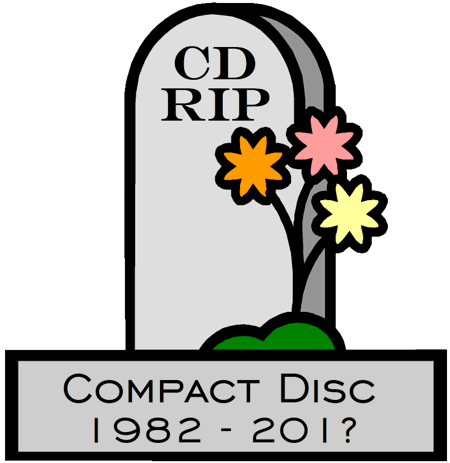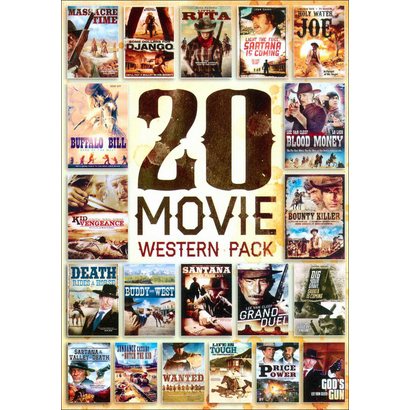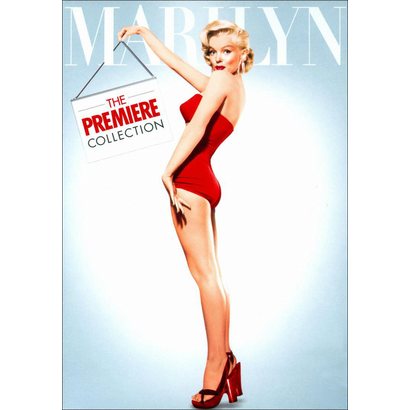| John Broskie's Guide to Tube Circuit Analysis & Design |
14 September 2013 Move Over Texas, Colorado is Flooding
Although not up there with the universal deluge recorded in the Old Testament, we have gotten a lot of rain lately. Unlike snow that sits there and slowly melts away, rain quickly flows, pools, and overflows the creeks and rivers. Over 200 people are still unaccounted for and Boulder County must repair 100 to 150 miles of roadway and 20 to 30 bridges. Where I live in Northern Colorado things are not too bad, although we, too, have our closed bridges and roads. Indeed, it was beautiful this morning and my daughter was thrilled to see a lake in what had been days earlier a parched drainage basin near our house. Whether our having largely sidestepped the worst of it was due to luck or better planning by civil engineers, I cannot say. Perhaps a blend of both? I contacted my fellow Coloradian, Lynn Olsen, who lives near Boulder, which is truly in bad shape, but he is also doing well. Last year, while we searched for a house to live in, we visited a new housing development that we liked a great deal, so much so that my wife went hunting on the web to find out more information about the project. She discovered that a block of houses were being built in a floodplain. When we returned to development for a second look, my wife mentioned the floodplain's extension into the housing project. The sales representative laughed, astounded by our ignorance, explaining that we had nothing to worry about, as that floodplain map was based on a once-in-a-hundred-year occurrence, which was next to never. Well, next-to-never becomes inevitable, given enough time, which it seems that Colorado had experienced. (Apparently the hundred-year clock does not start ticking once the house is purchased. Who would have guessed?) As A.J.P. Taylor said, “Nothing is inevitable until it happens,” which we could amend with, Never ceases being never, once it happens. For people like that sales representative, history only extends about ten years into the past, as in 1997 the Spring Creek Flood spread through Fort Collins, the northern Colorado foothills, and LaPorte, killing five people and causing $200 million in damage. In 1976, a foot of rain into the Big Thompson River Canyon created a flood that washed away homes, cars, highways and killed 144 people—all in within just two hours. Colorado suffered big floods in 1965, 1948, and 1912. So, it seems that, much like our beleaguered US dollar, a hundred years just doesn't cover as much as it used to.
The Return of the SRPP+ The circuit's plus configuration has been covered here before; the last time being almost a hundred blog posts ago in Blog Number 173.
Of course, a plain SRPP circuit can easily achieved by simply replacing resistor R1 (R5 on the PCB) with a jumper wire. On the other hand, if resistor R2 (R4 on the PCB) is outfitted with a jumper wire, then the PP (push-pull) falls out of the SRPP and the circuit becomes a grounded-cathode amplifier, whose plate resistor has been replaced by an active load resistance equal to rp + (mu + 1)R1. Since the bottom triode and its unbypassed cathode resistor define the exact same effective resistance, assuming that R1 equals Rk, the gain—with not external load impedance—will equal mu/2. If the bottom triode's cathode resistor is bypassed by a large capacitor, then the gain will be higher, equaling: Gain = (mu² + mu)Rk / (rp + [mu + 1]Rk) In addition, the PSRR will improve, as the voltage division will no longer be 50% (-6dB), but equal to PSRR = 20Log[rp / (2rp + [mu + 1]Rk)] Moreover, the output impedance will fall with the cathode resistor bypassed, as the Zo will equal Zo = rp || (rp + [mu + 1]Rk) Sounds wonderful, does it not? Well, I don't recommend it, save for when you absolutely must. Why not? The bypass capacitor is very much in the signal path. And, even it were sonically blemish-free, the bottom triode's linearity is reduced, as it no longer benefits from the degenerative feedback provided by the unbypassed cathode resistor. On the other hand, if you are driving an even less linear audio stage, say a power tube in a single-ended power amplifier, then the bypass capacitor ca be a good idea. How so? Since the input and output stage nonlinearities bend in opposite directions, the net result might be more linear than if a perfectly linear input stage were used. How is that possible? Both the input stage's triode and the output stage's triode (or pentode) are easier to turn than to turn off, which will exaggerate their negative-going plate swings, as the triodes readily conduct more. So, if the input stage puts out an excessively big down swing, the output tube will turn down its current conduction to a greater degree than otherwise, resulting in a more linear output at its plate. To be honest, the output tube will bend far more than the input tube will, so the result is not perfectly linear, just closer to linear.
As the input stage drops in conduction, the output tube increases in its conduction, which tends to linearize. If the input stage had increased in conduction along with the output tube, the result would be to compound the two nonlinearties. See Blog Number 27 and Complementary Inverse Distortion Cancellation for more information on this topic. For most, the SRPP+ PCB will be used as the foundation of a line-stage amplifier. I prefer a comparable Aikido or CCDA or cathode-coupled line-stage, but then it's your ears. I must admit that I do have fond memories of listening to my Sennheiser HD-414s with my 6DJ8-based SRPP OTL headphone amplifier back in my college days. The 2k load was easy to drive and only required a 6µF coupling capacitor. In other words, the SRPP+ topology can make a sweet little headphone amplifier, as it offers fairly large output swings into fairly low impedance loads—without a global feedback loop.
On the other hand, a feedback loop could be added by adding two resistors per channel, in the classic inverting-amplifier arrangement, wherein a resistor is placed in series with the input signal and the bottom triode’s grid and a feedback resistor spans from the same grid to the output, after the coupling capacitor. Such an arrangement might be perfect for use with an MP3 player, such as an iPod. Because even the lowest rp triode exhibits a relatively high plate resistance compared to the load presented by even highest-ohmage headphones, it is best to use an output transformer with loads below 250 ohms. I built a test setup with the new SRPP+ PCB and two JJ ECC99 tubes. With my HD-650 headphones the sound was lush and soft, with a fat bass. It wasn't truly neutral, but it was a lot of fun with most music. (Julie Andrews sounded quite lovely with this setup. Nothing makes me happier than suddenly liking music that I thought that I didn't like.) (Maybe the reason that old tube amplifiers sound so much better than their younger solid-state brothers is that the tube amplifiers are not true voltage-out designs, nor are they current-out designs, but something in between, although being closer to the voltage-out side certainly. I have a hunch that an output impedance equal to the load impedance might prove the best compromise. Of course, some speakers and headphones will prefer either a voltage- or current-output. Much more experimentation is required.)
The SRPP+ is quite flexible, as a SRPP+ can be built using many different tubes. In general, low-rp should be used, such as the 6CG7, 6DJ8, 6H30, 12AU7, 12BH7, and ECC99 are the obvious choices, but other twin-triodes can be used. For example, even a 12AX7 could find use with the right load impedance. In other words, the list of possible tubes is a long one: 6AQ8, 6BC8, 6BK7, 6BQ7, 6BS8, 6DJ8, 6FQ7, 6GC7, 6H30, 6KN8, 6N1P, 12AT7, 12AU7, 12AV7, 12AX7, 12BH7, 12DJ8, 12FQ7, 5751, 5963, 5965, 6072, 6922, E188CC, ECC88, ECC99… The only stipulations are that the two triodes within the envelope be the same and that the tube conforms to the 9A or 9AJ base pin-out. Sadly, the 12B4 and 5687 cannot be used with this PCB.
The SRPP+ PCB and kits are now available at the GlassWare Yahoo store.
The Upcoming Death of the CD If I had to place my bet, it would be on CDs just being far too expensive. Each of us has limited amounts of dispensable money and few would consider the CD a bargain, not at their average cost of $13.99 and more for classical CDs. Long ago, LPs were perfect impulse buys, not so for CDs. For example, at Target for $12.99, the roughly same price of a CD, I can buy a collection of 20 classic western movies. Thirtyone hours of audio and visual entertainment versus 31 minutes of CD play for the same cash outlay. But those are old movies! True, but why can't I buy thirtyone hours of old jazz music for $12.99? Don't like cowboy movies? Well, for $29.99 you can buy the 17-DVD Marilyn: The Premiere Collection. Just three MM movies would be a bargain at that price, so seventeen movies is a steal. Can't stand old movies, even old Marilyn Monroe movies? Well, starting at $5, Target sells many DVDs of fairly recently released movies. As I have said here before, movies cost far, far more to produce than audio recordings. And DVDs cost more to make than CDs, although I wouldn't be surprised to learn that like the CD, the DVD's plastic case cost more than the DVD. Stop and ponder this: why should a CD of a movie's soundtrack cost more than the DVD of movie, which plays for twice as long? I might be wrong, but I don't believe that my local Target sells any classical CDs, which isn't that odd when you consider that classical album sales fell by 20.5% from 2011 to 2012. Surely one of the big classical-music labels will catch on and move to an online-only format, forsaking CDs altogether. There are gobs of classical-music downloads that I would buy, if they were offered at a low price and in a loss-less audio format; say, 17 albums for $29.99. Given that the label will make zero money from me this year, making $29 without having to provide a physical product is great. (Assuming a 99 cent cost for the credit-card transaction fee and bandwidth cost.) My two kids have never bought a CD, although they have received them as gifts from old folks. Why should they buy a CD, as their money can deliver so much more entertainment elsewhere? The future of CDs stops with them and their friends. If the RIAA came to me asked for my advice, I would freely give it—namely, from now on all CDs will come with link to a secure web site and with an individual code number, which will give the customer a one-time access to a free download of the album's content in usual MP3 format. This would save the customer the hassle of ripping the CD and it would allow the recording company the ability to sell upgrades to high-res audio files and other related goods, such as posters and T-shirts. This move would forestall the date of the CD's death, but not prevent it. It would, however, get the public used to dealing with the record labels directly, rather than giving their money to ITunes. Moreover, the record label could send out e-mail to the customer that offered a new recording download by the artist at deep discount, bypassing the need to produce a CD. Most hardcore audiophiles despise the CD and will shed no tears at its demise. Ideally, we will get a replacement that truly sings.
Next Time //JRB
|
I know that some readers wish to avoid Patreon, so here is a PayPal button instead. Thanks.
John Broskie
And
High-quality, double-sided, extra thick, 2-oz traces, plated-through holes, dual sets of resistor pads and pads for two coupling capacitors. Stereo and mono, octal and 9-pin printed circuit boards available.
Designed by John Broskie & Made in USA Aikido PCBs for as little as $24 http://glass-ware.stores.yahoo.net/
The Tube CAD Journal's first companion program, TCJ Filter Design lets you design a filter or crossover (passive, OpAmp or tube) without having to check out thick textbooks from the library and without having to breakout the scientific calculator. This program's goal is to provide a quick and easy display not only of the frequency response, but also of the resistor and capacitor values for a passive and active filters and crossovers. TCJ Filter Design is easy to use, but not lightweight, holding over 60 different filter topologies and up to four filter alignments: While the program's main concern is active filters, solid-state and tube, it also does passive filters. In fact, it can be used to calculate passive crossovers for use with speakers by entering 8 ohms as the terminating resistance. Click on the image below to see the full screen capture. Tube crossovers are a major part of this program; both buffered and un-buffered tube based filters along with mono-polar and bipolar power supply topologies are covered. Available on a CD-ROM and a downloadable version (4 Megabytes). |
||
| www.tubecad.com Copyright © 1999-2013 GlassWare All Rights Reserved |
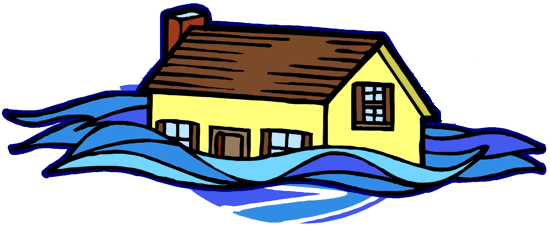
 New PCB
New PCB